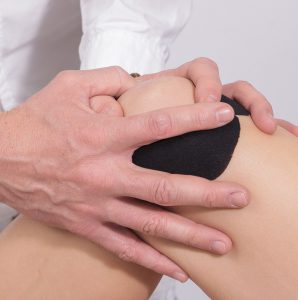Joint Replacement Surgery
 Joints are formed by the ends of two or more bones connected by tissue called cartilage. Joint replacement is performed in a surgical center. Depending on the joint, the surgery may be performed as an outpatient procedure, or in-patient. Even those procedures requiring inpatient care almost never require a stay longer than 2-3 nights.
Joints are formed by the ends of two or more bones connected by tissue called cartilage. Joint replacement is performed in a surgical center. Depending on the joint, the surgery may be performed as an outpatient procedure, or in-patient. Even those procedures requiring inpatient care almost never require a stay longer than 2-3 nights.
It’s also important to consider non-invasive therapies that are available. In fact, sometimes your insurance may require minimally invasive treatments before authorizing surgery. This is another reason it is so important to work with a surgeon through your care process. The most common joints replaced are:
Other joints, such as the thumb, big toe, and finger joints can also be replaced when necessary. There are over 150 kinds of replacement joints made for knees alone. Each year, more than 1 million people in the United States alone will undergo joint replacement surgery. Healthy cartilage serves as a protective cushion, allowing smooth, low-friction movement of the joint. If the cartilage becomes damaged by disease or injury, the tissues around the joint become inflamed, causing pain. With time, the cartilage wears away, allowing the rough edges of bone to rub against each other, causing more pain.
When only some of the joint is damaged, a surgeon may be able to repair or replace just the damaged parts. When the entire joint is damaged, a total joint replacement is done. To replace a total hip or knee joint, a surgeon removes the diseased or damaged parts and inserts artificial parts, called prostheses or implants.

You may want to know more about Robotic Joint Replacement.
